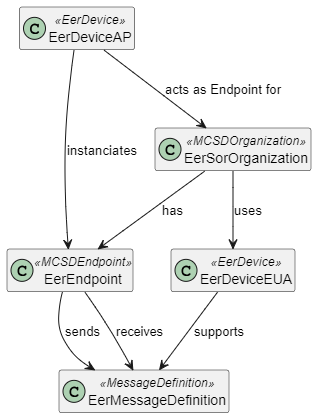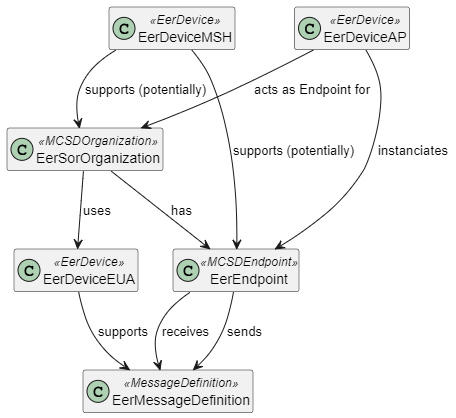DK EHMI Endpoint Register (EER)
2.0.0-draft - ci-build
DK EHMI Endpoint Register (EER)
2.0.0-draft - ci-build
DK EHMI Endpoint Register (EER), published by MedCom. This guide is not an authorized publication; it is the continuous build for version 2.0.0-draft built by the FHIR (HL7® FHIR® Standard) CI Build. This version is based on the current content of https://github.com/medcomdk/dk-ehmi-eer/ and changes regularly. See the Directory of published versions
| Official URL: http://medcomehmi.dk/ig/eer/ImplementationGuide/dk.ehmi.eer | Version: 2.0.0-draft | |||
| Draft as of 2025-11-11 | Computable Name: EHMIEndpointRegisterEERIG | |||
The EER Endpoint Register (EER) Profile supports RESTful queries across related care services resources and discovery of Endpoint addresses related to a SOR Organizational Unit in Danish Healthcare using a RESTful interface.
This version of the profile supports registration of and querying for the following use cases:
EHMI Core
Registration of Endpoints correlating with a SOR organizational unit
ehmiSMP
All registrations for EHMI Core in version 1.0 will most likely be posted manually by MedCom.
EHMI Delivery Status
All registrations for Devices used by EDS in version 1.0 will most likely be posted manually by MedCom.
The profile is based upon and inspired by the IHE mCSD profile and the use cases and solutions using mCSD are outlined in the mCSD White Paper.
Currently supported profiles of the IE MSCD profiles stated in 1:46 Mobile Care Services Discovery (mCSD) are:
1. Organization
Organizations are “umbrella” entities; these may be considered the administrative bodies under whose auspices care services are provided such as Healthcare Information Exchanges(HIEs), Integrated Delivery Networks (IDNs), Non-Government Organizations (NGOs), Faith-Based Organizations (FBOs) or even a one-physician family practice. An organization has a unique identifier and may have additional administrative attributes such as contact person, mailing address, etc. Departments of an institution, or other administrative units, may be represented as child Organizations of a parent Organization.
7. Endpoint
An Organization may be reachable for electronic data exchange through electronic Endpoint(s). An Endpoint may be a FHIR server, an IHE web services actor, or some other mechanism. If an Organization does not have an Endpoint, it may still be reachable via an Endpoint at its parent Organization or an affiliated Organization.
Other MCSD Profiles
Other profiles like the following will be considered supported in the coming versions of EER.
While MCSD is a great framework for an organizational directory of healthcare providers, it lacks a few things to be able to replace part of the Danish SOR Directory.
SOR includes:
EER enheances MCSD with what SOR includes and adds furthermore:
Message Service Handlers (eerDeviceMSH) are software solutions standing alone or built into EUAs or APs. When stand-alone solutions, it is helpful to see them acting in the diagrams. Below the two diagrams show EER with and without MSHs.

<br clear="all"–>

The calls for EER are always produced in a security context.